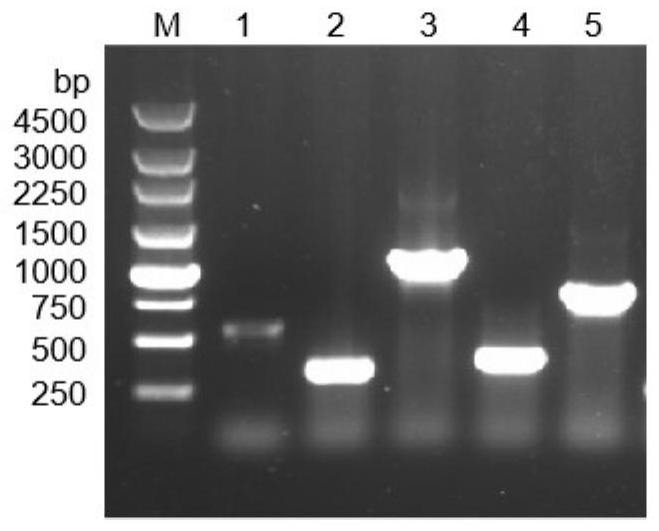Filamentous fungus replicon
A filamentous fungus and replicon technology, applied in biochemical equipment and methods, fermentation, plant gene improvement, etc., can solve the problems of low efficiency of integration and transformation, lack of plasmids, etc., and achieve rich component library, high stability, and expansion The effect of choosing diversity
- Summary
- Abstract
- Description
- Claims
- Application Information
AI Technical Summary
Problems solved by technology
Method used
Image
Examples
Embodiment Construction
[0036] The present invention will be further described in detail below with reference to the accompanying drawings and specific embodiments.
[0037] 1 Fungal culture and genome extraction
[0038] 1.1 Fungal culture
[0039] Take the strain out of the -80 ℃ refrigerator, thaw naturally on ice, dip the bacterial liquid in the inoculation loop burned by the alcohol lamp in the ultra-clean workbench, streak the solid PDA medium, and darken the culture conditions according to Table 1. Cultivate until a single colony grows, pick a part of the bacterial cells and mix them in sterile water, take 200 μL of the spore suspension and cultivate it in the PDA solid medium covered with cellophane until the medium is covered with hyphae, and refrigerate at 4°C. save.
[0040] Table 1 Fungal species and culture conditions
[0041]
[0042] 1.2 Fungal genome extraction method
[0043] The cultured fungal mycelium was used as the template to extract the genome, and the specific steps we...
PUM
 Login to View More
Login to View More Abstract
Description
Claims
Application Information
 Login to View More
Login to View More - R&D
- Intellectual Property
- Life Sciences
- Materials
- Tech Scout
- Unparalleled Data Quality
- Higher Quality Content
- 60% Fewer Hallucinations
Browse by: Latest US Patents, China's latest patents, Technical Efficacy Thesaurus, Application Domain, Technology Topic, Popular Technical Reports.
© 2025 PatSnap. All rights reserved.Legal|Privacy policy|Modern Slavery Act Transparency Statement|Sitemap|About US| Contact US: help@patsnap.com



